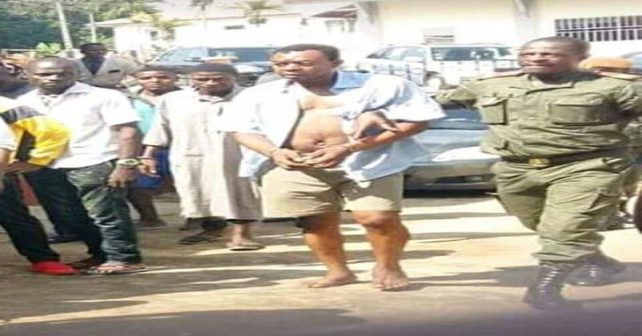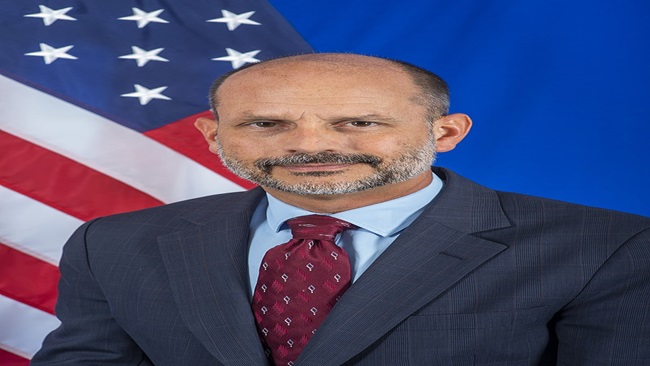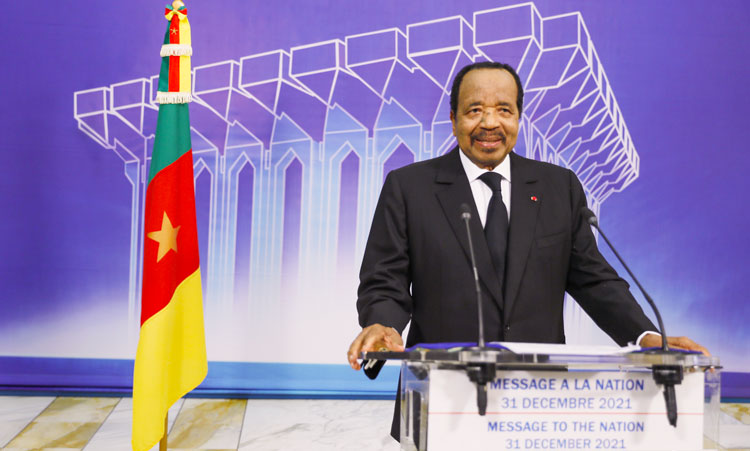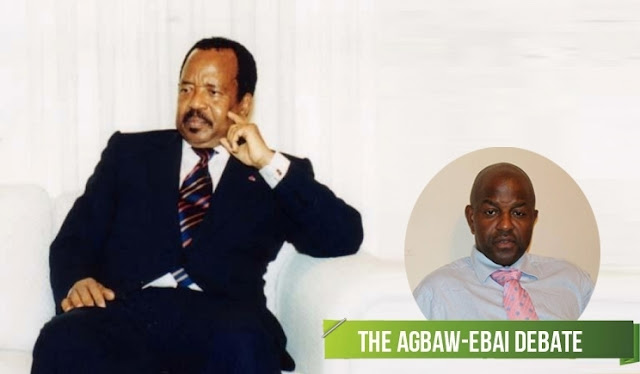Categories
Recent Posts
- Football: De Bruyne to leave Man City at end of the season
- Southern Cameroons Crisis: Brit missionary and assistant abducted, church begs for their release
- Prosecution of journalists in Cameroon: European Parliament says enough red flags have been ignored
- Race for the Unity Palace: Kamto’s strategy sparks clash ahead of election
- CEMAC introduces new coins, including a CFA200 piece
Archives
- April 2025
- March 2025
- February 2025
- January 2025
- December 2024
- November 2024
- October 2024
- September 2024
- August 2024
- July 2024
- June 2024
- May 2024
- April 2024
- March 2024
- February 2024
- January 2024
- December 2023
- November 2023
- October 2023
- September 2023
- August 2023
- July 2023
- June 2023
- May 2023
- April 2023
- March 2023
- February 2023
- January 2023
- December 2022
- November 2022
- October 2022
- September 2022
- August 2022
- July 2022
- June 2022
- May 2022
- April 2022
- March 2022
- February 2022
- January 2022
- December 2021
- November 2021
- October 2021
- September 2021
- August 2021
- July 2021
- June 2021
- May 2021
- April 2021
- March 2021
- February 2021
- January 2021
- December 2020
- November 2020
- October 2020
- September 2020
- August 2020
- July 2020
- June 2020
- May 2020
- April 2020
- March 2020
- February 2020
- January 2020
- December 2019
- November 2019
- October 2019
- September 2019
- August 2019
- July 2019
- June 2019
- May 2019
- April 2019
- March 2019
- February 2019
- January 2019
- December 2018
- November 2018
- October 2018
- September 2018
- August 2018
- July 2018
- June 2018
- May 2018
- April 2018
- March 2018
- February 2018
- January 2018
- December 2017
- November 2017
- October 2017
- September 2017
- August 2017
- July 2017
- June 2017
- May 2017
- April 2017
- March 2017
- February 2017
- January 2017
- December 2016
- November 2016
- October 2016
- September 2016
- August 2016
- July 2016
- June 2016
Featured
 Prosecution of journalists in Cameroon: European Parliament says enough red flags have been ignored
Prosecution of journalists in Cameroon: European Parliament says enough red flags have been ignored  1982-2025: How long will Biya hang on?
1982-2025: How long will Biya hang on?  How Biya and Archbishop Nkea protected the sanctity of the family in Cameroon
How Biya and Archbishop Nkea protected the sanctity of the family in Cameroon  October Presidential Election: Will 92-year-old Biya be re-elected?
October Presidential Election: Will 92-year-old Biya be re-elected?  Why is Biya seeking re-election?
Why is Biya seeking re-election?
Most Commented Posts
 4 Anglophone detainees killed in Yaounde
4 Anglophone detainees killed in Yaounde
18 comments Chantal Biya says she will return to Cameroon if General Ivo Yenwo, Martin Belinga Eboutou and Ferdinand Ngoh Ngoh are sacked
Chantal Biya says she will return to Cameroon if General Ivo Yenwo, Martin Belinga Eboutou and Ferdinand Ngoh Ngoh are sacked
13 comments The Anglophone Problem – When Facts don’t Lie
The Anglophone Problem – When Facts don’t Lie
12 comments Anglophone Nationalism: Barrister Eyambe says “hidden plans are at work”
Anglophone Nationalism: Barrister Eyambe says “hidden plans are at work”
12 comments Largest wave of arrest by BIR in Bamenda
Largest wave of arrest by BIR in Bamenda
10 comments
Latest Tweets
Featured
-

Football: De Bruyne to leave Man City at end of the season
-

Southern Cameroons Crisis: Brit missionary and assistant abducted, church begs for their release
-

Prosecution of journalists in Cameroon: European Parliament says enough red flags have been ignored
-

Race for the Unity Palace: Kamto’s strategy sparks clash ahead of election
-

CEMAC introduces new coins, including a CFA200 piece
-

Football: Real Madrid manager Ancelotti testifies in court over tax charges
-

Manyu Division: Ma Nchong Stella is the new Ekandim Nkanda of Ntenako
© Cameroon Concord News 2025
27, September 2018
Why video evidence should not be the only thing that forces the Biya regime to investigate human rights violations 0
On July 12, Amnesty International released a detailed analysis in response to the emergence on the internet of a video depicting the execution of two women and very young children by Cameroonian armed forces. One of the children was killed strapped to a woman’s back, each executed by the same deadly hail of bullets.
The horror depicted in the recordings hit the international headlines, and the government immediately replied, dismissing the video as “fake” and designed to “tarnish the image of Cameroon’s defense forces.” Eventually, the government promised to look into the video and reported later on having arrested seven soldiers in connection with the event.
Less than a month later, another video came to the attention of Amnesty researchers, this one depicting a “kamikaze” reprisal mission, as jokingly described in the recording by one of the soldiers. The video documents the movement of soldiers on foot and vehicles through a village. Midway through the recording, with structures burning in the background, we witness the execution of a dozen people, sitting and laying against an exterior wall.
Then too, Amnesty released a statement condemning the executions carried out by Cameroonian armed forces. This time, rather than immediately dismissing the newly emerged video as fake, the Minister of Communications said the government would open an investigation, though at the same time claiming the government was facing a “campaign of denigration.”
As human rights investigators increasingly handle video and photographic evidence in the course of their work, the methods used to authenticate the “who, what, where, and when” of these materials have become more and more sophisticated. This authentication work is crucial as it is not uncommon for video or other material to be “fake” — staged, manipulated, edited or — quite frequently — from somewhere else.
Sometimes, it is material misattributed from another place or time. Or it may be a piece of content may show something, but whether it is evidence of a human rights abuse is ambiguous. Like other types of evidence, video and photographic material whose origin or history is unclear is treated with the rightful skepticism by investigators, precisely because misinformation is increasingly manifesting in visual form.
How we authenticated
In the case of the two recent Cameroon videos, the “what” is undeniable — the unambiguous executions of unarmed men, women, and children.
As to who the perpetrators are in the videos. Amnesty International investigators visually identified uniforms, weapons, other equipment, and military ranks, and were all known to be associated with, or belong to, Cameroonian security forces. In one of the videos, identification of the Zastava M21, an automatic rifle that is rare in Africa but used by a small section of the Cameroonian army, was an important clue. Analysis of the audio dialogue — accents and local languages spoken — was consistent with visual findings, and there can be little doubt that in both videos, the Cameroonian security forces were direct participants in the crimes recorded.
As to when and where the videos were taken, it is more generally difficult to conclude either with certainty without some knowledge of the other. In the case of the most recently released video, investigators identified possible locations through verbal cues in the recording and review by local contacts. Importantly for corroboration, the person recording the video walked for some distance while filming. This allowed analysts to identify many visual cues in the video — road intersections, oddly shaped buildings, trees, among others — as well as their spatial relation to each other.
Analysts at Bellingcat — a collective of online investigators using open source and social media — also working to locate the video — identified a possible location: the village of Achigachia. To independently verify the location, Amnesty investigators took the visual cues taken from the video and plotted against satellite imagery of Achigachia to determine if there was a perfect overlap. There was, including at the exact coordinates in the village where at least 12 people were executed against a wall by a barrage of automatic gunfire. In a longer version of the same video, which surfaced later, the soldiers themselves named the village where the events occurred.
With the confirmation of where the executions took place, the question became whether we could narrow the time in which the crime occurred. With no references to the date, season, or even the year in the video or audio, investigators again relied on satellite imagery. Since the “kamikaze” mission documented in the video included the burning of buildings, an Amnesty satellite imagery expert scanned imagery archives of the town to determine whether burning was evident at those precise points. With luck, two images taken close in time to each other in January 2015 captured the town before fires, and after.
Thus, through careful and detailed analysis, we concluded that the second video was taken in Achigaya between 10 and 26 January 2015 and depicts extrajudicial executions at the hands of Cameroonian security forces.
Why the videos should not have mattered more than previous violations
In today’s media-saturated world, one of the most notable characteristics about these recordings — aside from the uniquely horrifying events they document — is when they were captured. These videos did not capture breaking events. They are both years old.
In response to the video of the execution of the women and children, the UN’s High Commissioner for Human Rights stated:
Indeed, they are not isolated cases, and in most respects, the videos do not reveal an unknown pattern. In September 2015 and again in July 2016, Amnesty issued extensive reports documenting widespread abuses by Cameroon’s security forces in the course of their fight against Boko Haram: arbitrary detention, torture, disappearances, and the killing of civilians.
Over the last 2 years, Amnesty has continued documenting abuses amounting to war crimes by the Cameroonian security forces operating in the Far North and elsewhere. Just as the crimes depicted in the videos are unambiguous, so too are the crimes documented by Amnesty and others over the intervening years since they were first recorded.
While it is not uncommon for additional evidence to emerge after a report publication, this instance is notable because of the attention received in news media, likely a result of the abject cruelty the videos depict. While the government has made initial statements at least paying lip-service to accountability, it should not come only in response to the emergence of video, 3 years after the fact.
While video evidence can be a powerful tool for human rights defenders, and digital connectivity is empowering ever-larger segments of humanity to document the struggles they face, there is a risk. Video documentation cannot become the minimum evidentiary standard that compels governments and authorities to act in the face of abuses by police or security forces.
The absence of a meaningful response by authorities to these horrific acts is part of a larger pattern of unwillingness or inability to hold the perpetrators to account in Cameroon’s fight against Boko Haram. Such an atmosphere of impunity causes the horrific acts witnessed on the videos and documented in extensive reporting. And it leads to equally horrific acts that are not captured in video and will never similarly capture the attention of news media and the broader public.
Scott Edwards is a Senior Crisis Adviser at Amnesty International based in Washington DC.